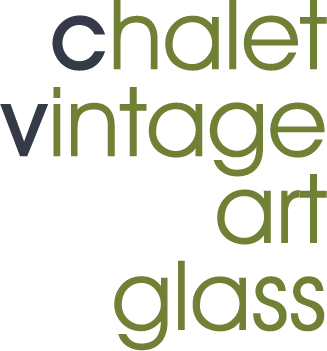A Chalet artist, Roberto De Marchi, talks to us about the Chalet Mushrooms
We know truly little about many of the non-production and/or rare Chalet pieces and this holds true regarding the Chalet mushrooms. At present, we have no inventory or production numbers for them. We have no sales brochures in which they are featured. We have no advertising in which they appear. However, Chalet artist Roberto De Marchi was able to provide some “first-hand” knowledge from his years working on the Chalet factory floor so his input here is especially treasured!
There are two types. Many of you will have seen the more commonly known – a hand blown figurine. Roberto relates that it was produced in 2-man teams quite regularly but in very small numbers – not large production runs. One artist created the stem while the second artist produced the free form cap. The spots were added to the glass at the end – they are broken pieces of round cane.
Although the Chalet mushroom figurine shape was Murano influenced, the Chalet stem is shorter and thicker than their Italian counterparts. Moreover, we have no evidence that with the exception of Altaglass, any of the other Canadian glasshouses of the Chalet era produced mushrooms.
To date, they have only been found with 2 markings – the etched “Chalet Canada” signature and the small gold Chantili sticker. The majority of what we know about the Chalet mushrooms comes from our collecting – and collectible they are! One of the Chalet “unicorns” in fact.
Chalet produced their figurines in only 4 colour combinations. As follows:
Clear stem and clear cap with white spotted cap.
Clear stem and amber cap with orange spots.
Amber stem and amber cap with orange spots.
Green stem and green cap with white spots.
From the mushroom fields of 50 Shades member Deborah Patterson. Roberto does not recall any other colours being produced – even as unique “Never say Never” pieces.
The mushroom stands about 3” high with a 4” diameter. It has a spotted cap which has a curved edge and is tilted – the degree of curve and tilt varies from figurine to figurine. These were hand done so this is typical and expected. You will also see slight variations in height and width – again, normal. The photograph below is a terrific illustration of these variations.
Let’s take a closer look:
Clear stem and clear cap with white spotted cap. The rarest and most sought after.
Clear stem and clear cap with orange spots. Second rarest and very eagerly sought as well.
Roberto finds it quite amusing that the preceding 2 colour combos are the most popular with today’s collectors as the clear stems and caps of the clear/white and clear/orange combos was not a deliberate design choice. Rather, these particular versions were made when they did not have coloured glass and were using up the clear crystal.
Amber stem and amber cap with orange spots.
Etched “Chalet Canada.”
Stickered “Chantili Canada.”
Green stem and green cap with white spots.
From the collection of 50 Shades member Cindy Bishop Loughlin.
From the collection of Melissa Patterson.
The amber and green colour combos were deliberate. Figurines coloured this way were made the most frequently and in greater numbers – hence, why we see them much more often. They are the “typical” Chalet mushroom figurine.
Collectors get a kick out of photographing these figurines in different settings so we have seen some great pictures. Let’s revisit a few!
Hmmmmmmmmm. Melissa Patterson’s mushroom seems to me to be too comfortable with the Mad Hatter.
Jo Highland’s Chalet mushrooms enjoying the sunlight.
Some even go on a road trip!
50 Shades member Trevor Batiuk took his to explore Drumheller Valley, Alberta. Dinosaur capital of the world.
And they even star in their own productions! Video courtesy of Jo Highland.
The second Chalet mushroom will be a surprise, I imagine, to most – a molded mushroom block with raised details. It was made in a steel mold – using steel allowed crisp details to be produced. Roberto worked these and said it was a 1 man process that was quite fast and easy. He would place a small amount of hot, liquid clear crystal in the mold, wait 2 to 3 minsutes until the glass had cooled slightly and could be handled. Then the form was removed and put into the cooling oven to harden. Roberto said he could make up to 50-60 during his shift. However, they were not produced on any regular or frequent basis.
Exceedingly rare. From the collection of Deborah Patterson.
On display (on loan from Mario Panizzon) at the 2010 Chalet exhibit in Cornwall, Ontario.
Unlike the molded Chalet owls shown with the molded mushroom here, this molded mushroom block with its 2 mushroom designs is the only configuration that we have seen to date.
Roberto also worked with the owl molds and as so often happens with the artists, when he saw this photograph, he casually dropped a huge surprise and news!. He remembers that the mushroom mold was also designed by the designer of the owl molds. So more collaboration between Chalet and Don Shepherd! The owl molds also appear in 2 more configurations - a single and a block of 4.
Thank you Roberto for answering my questions and sharing your memories – much appreciated!





















